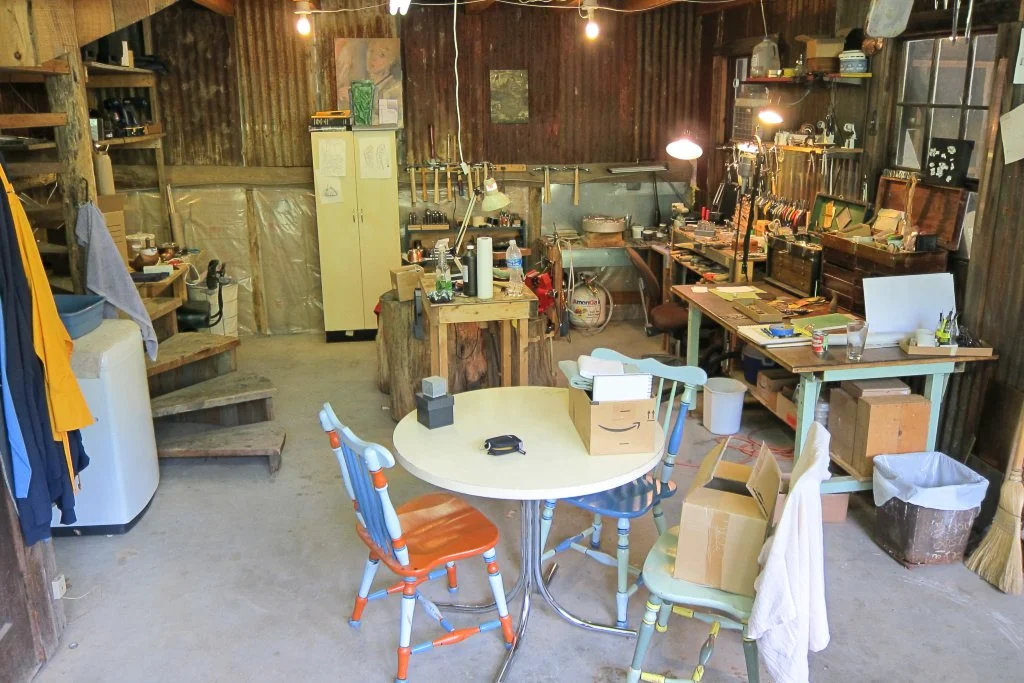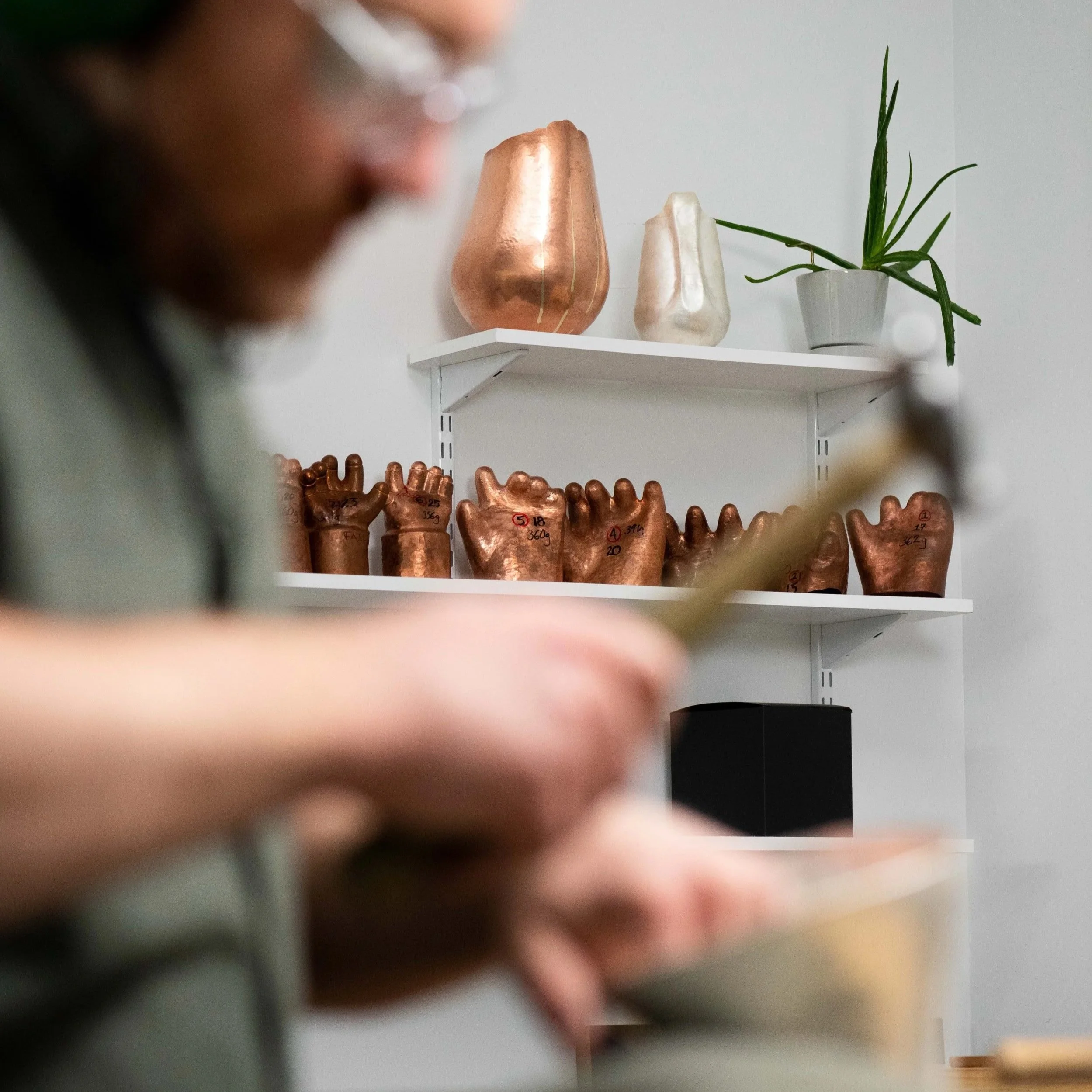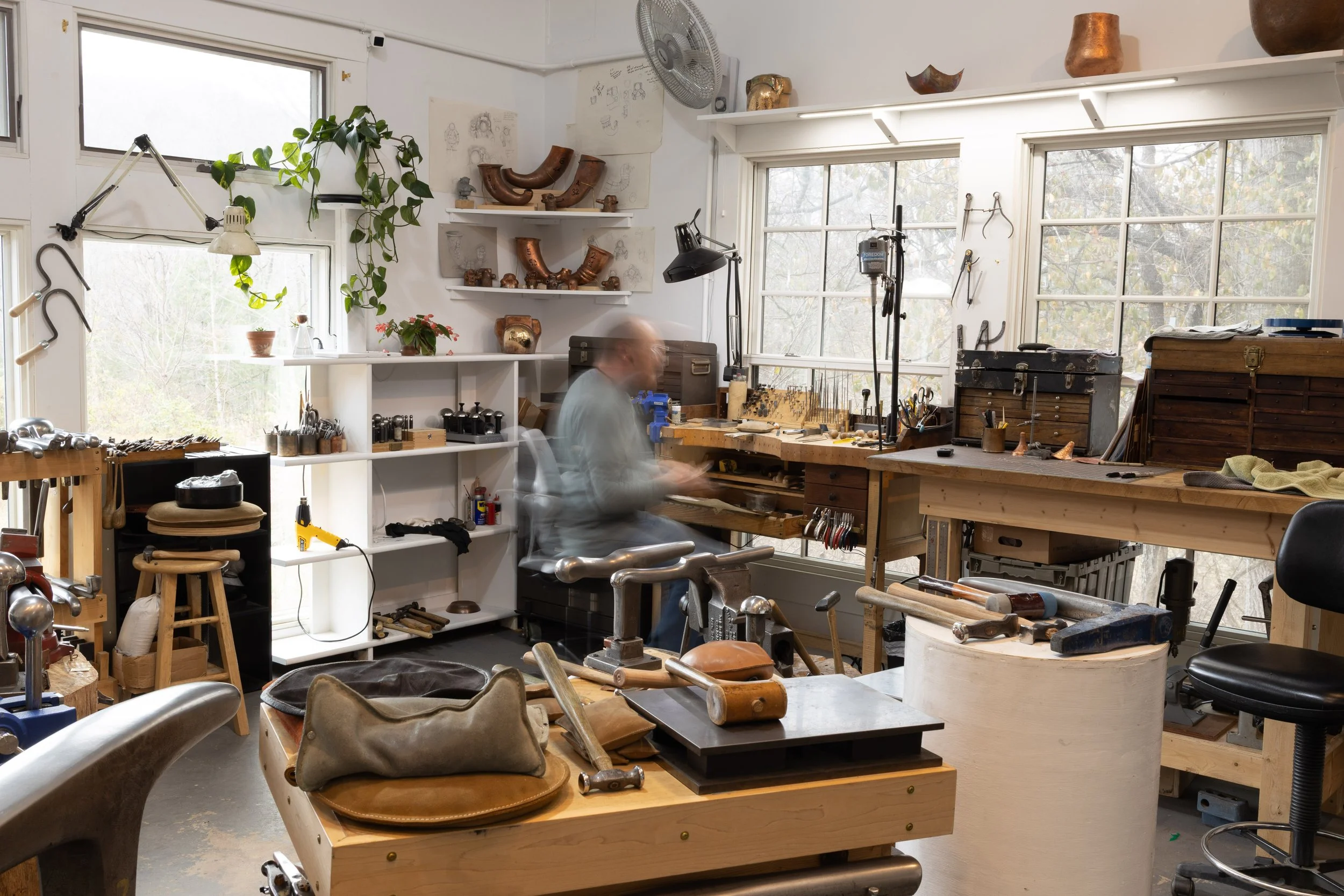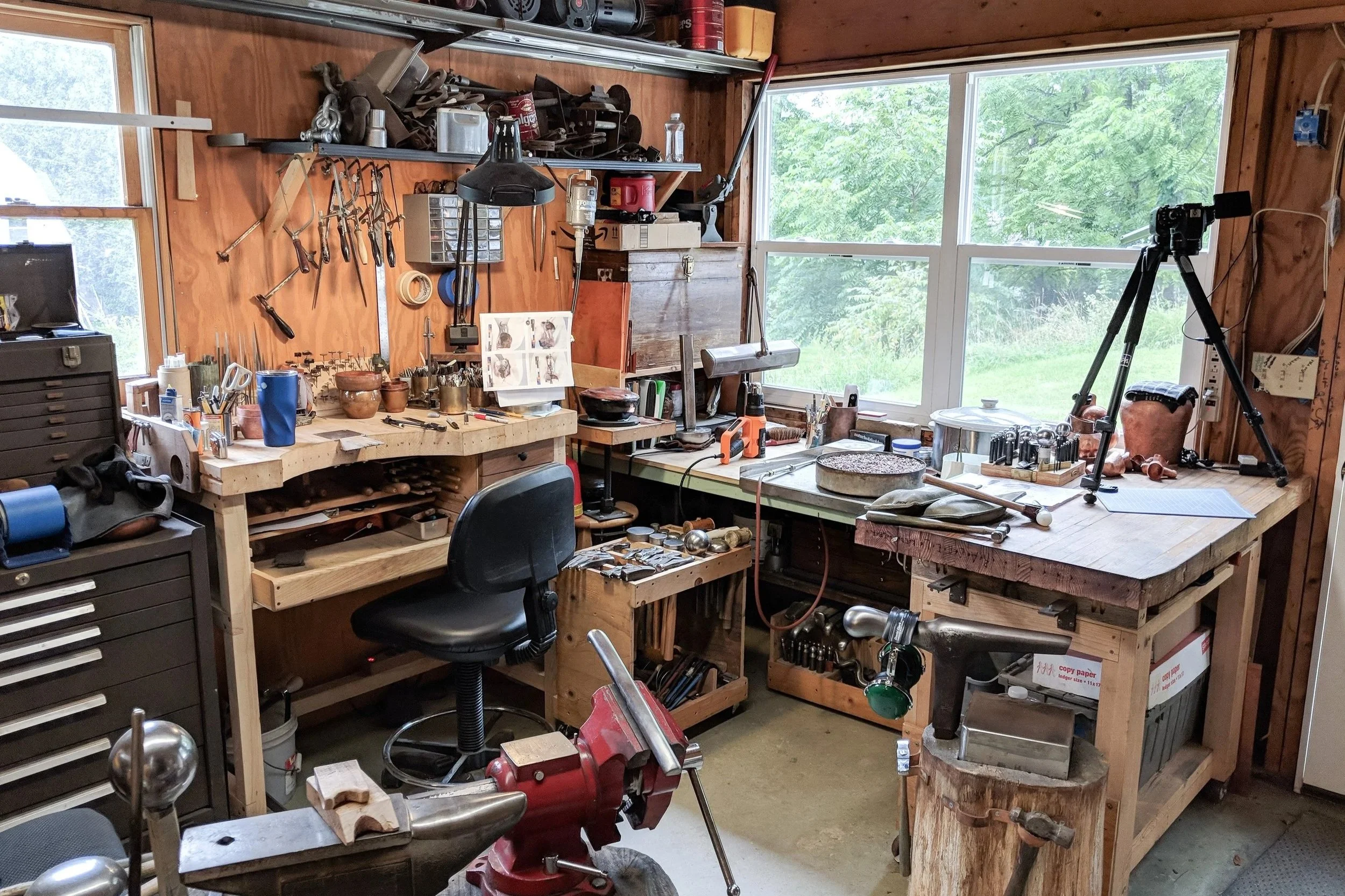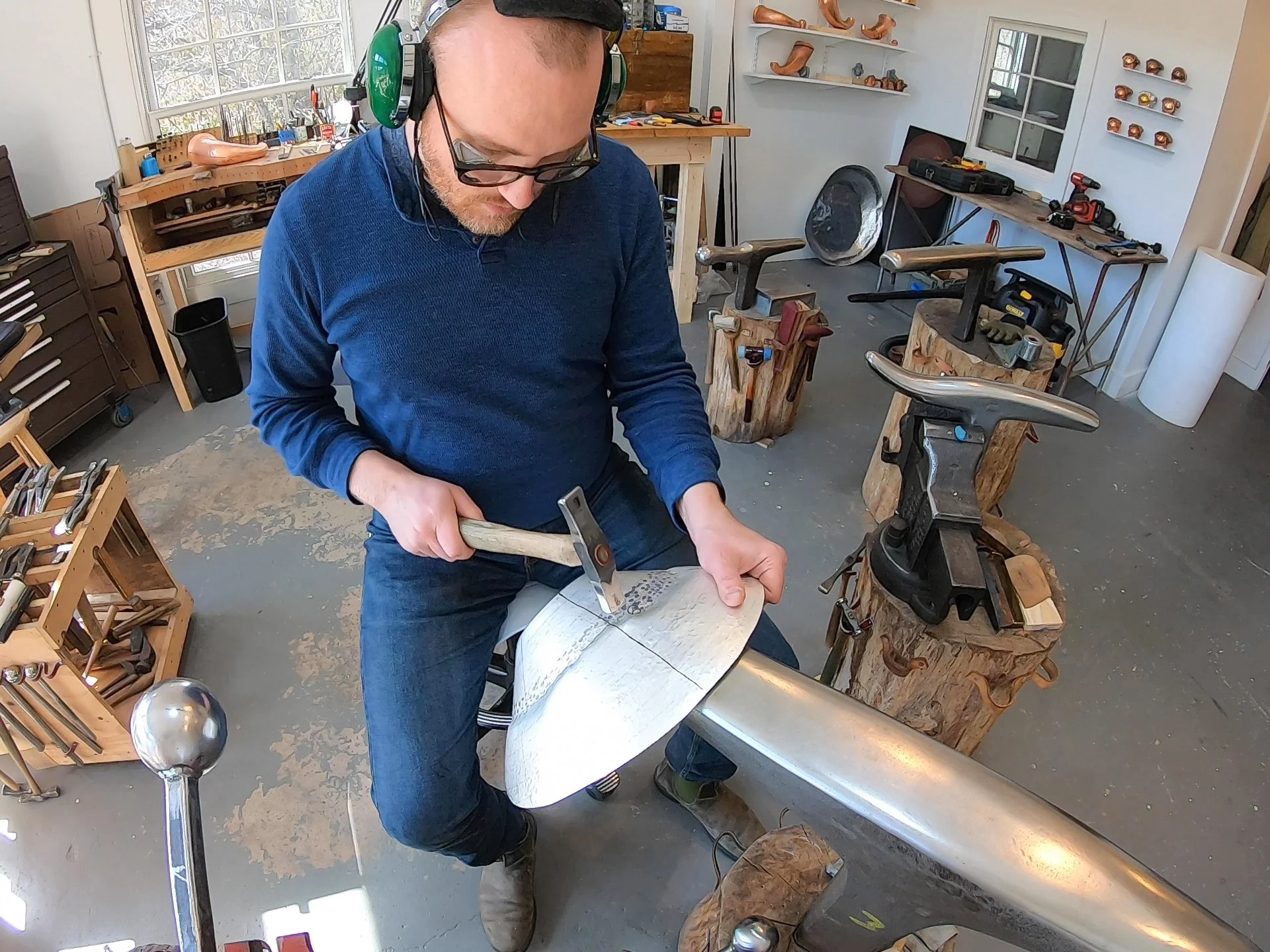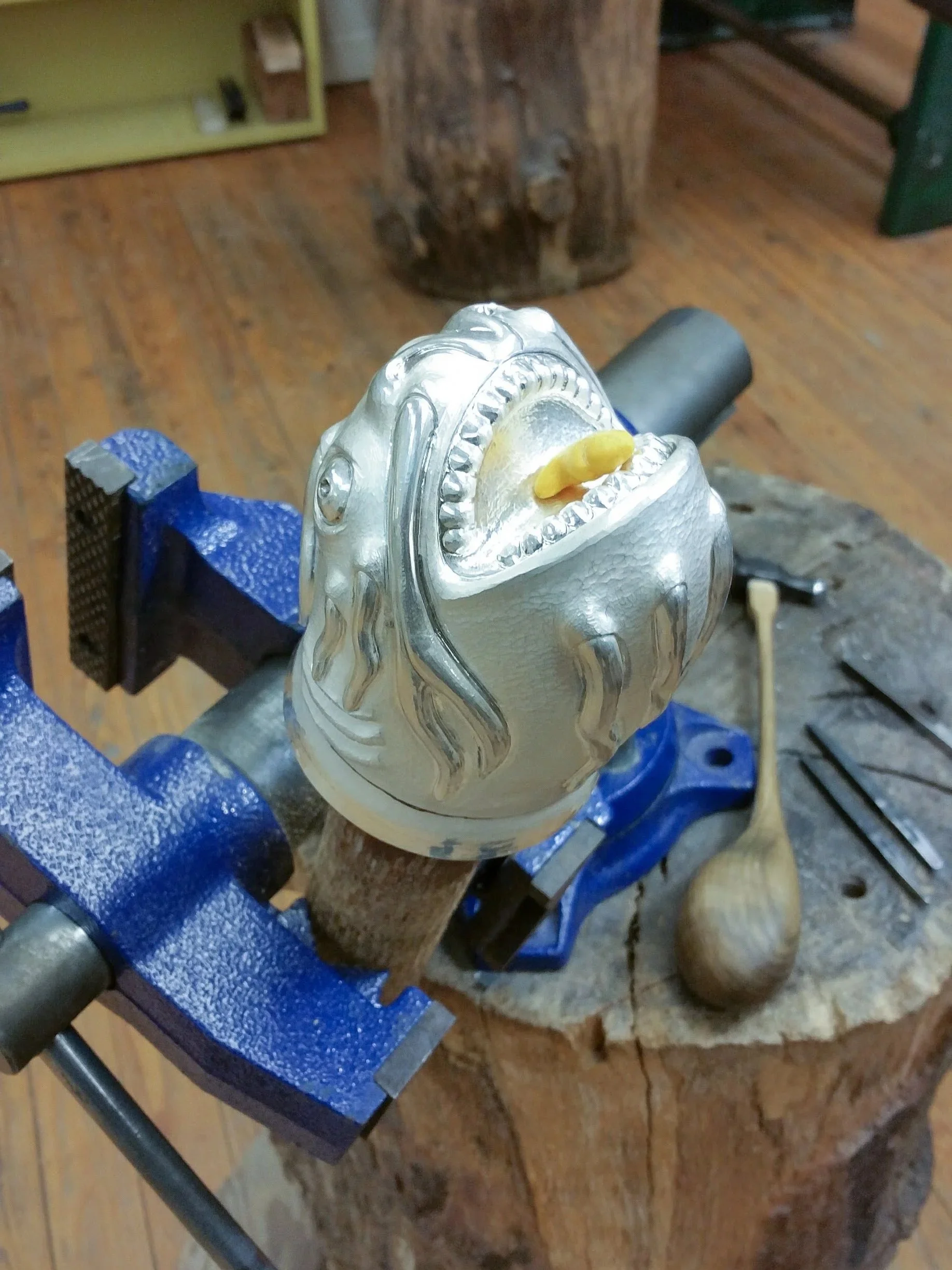About
Adam Whitney is a metalsmith based in Western North Carolina whose work is defined by a deep commitment to traditional metalforming techniques; raising, chasing, and repoussé. Through thousands of controlled hammer blows, he transforms flat discs of silver and gold into seamless volumetric forms, a process that requires equal parts technical precision, material intuition, and stubborn curiosity. Hammering is both his method and his inspiration; it is the engine behind his creative life.
Whitney’s work is shaped by a long-standing fascination with ancient and pre-industrial metalwork. Objects from antiquity; rhyta, auricular vessels, ritual cups, and hammered artifacts serve as guideposts for understanding form, gesture, and surface. He studies these objects not to imitate them, but to measure himself against their craftsmanship and to uncover ways they can speak to contemporary themes. This merging of eras is central to his practice: ancient drinking horns reimagined with astronaut suits, medieval sea-monster imagery translated into modern stirrup cups, or auricular ornament intersecting with science-fiction aesthetics.
Complex pieces often begin as months or years of research. When a form feels possible, Whitney begins a phase of prototyping in copper. These prototypes allow him to test hammering patterns, assess metal thickness, develop custom hammers and stakes, and resolve the technical unknowns inherent in making a raised form with no seams, additions, or subtractions. This rehearsal process forms the physical and conceptual foundation for each final work in silver or gold.
Whitney received his BFA in Crafts/Material Studies from Virginia Commonwealth University, but he first encountered raising while attending Pratt at Munson. His path through the metals field has included roles as Metals Coordinator, instructor, winter resident, and eventually resident artist at Penland School of Craft. He later taught metals and jewelry abroad, and completed a residency at the Houston Center for Contemporary Craft. These experiences broadened his technical vocabulary, exposed him to global metal traditions, and reinforced the importance of a dedicated personal studio practice.
In 2016, Whitney committed fully to his own work and has been a full-time studio artist ever since. Major projects include a nine-piece series of Sea Monster Stirrup Cups, the EMU Rhyton and its ongoing companions, process-driven publications documenting his hammering sequences, and recent explorations into auricular-style vessels and astronaut-inspired forms. His sculptures highlight the expressive potential of traditional processes and the endurance of handwork as a means of inquiry.
He continues to build a practice that values time, rigor, humor, and historical reference making objects that feel both ancient and distinctly contemporary, vessels that respect centuries of craft while embracing the curiosity and imagination of the present.



